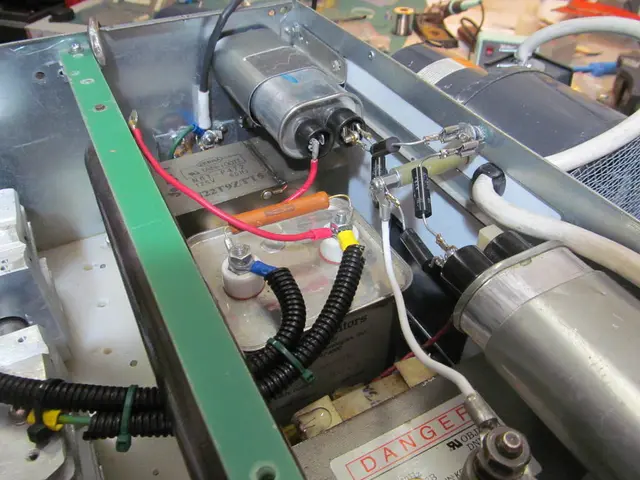Solar Telescope Enhancement Unveils Fine-Grained Coronal Rain on Sun in Extraordinary Clarity
Scientists Unveil Groundbreaking Tech to Reveal Sun's Dynamic Corona in Stunning Detail
The sun's outer atmosphere, the corona, is a fascinating but elusive region that remains hidden from view for most of the time. A recent breakthrough in technology has provided scientists with a breathtakingly clear visual of this mysterious area, thanks to a new adaptive optics system that clears atmospheric blur and reveals fine details of the wispy plasma on the sun's surface.
Researchers from the National Solar Observatory (NSO) and the New Jersey Institute of Technology (NJIT) have launched this pioneering system, presenting never-before-seen images and videos of the sun's corona. Their findings, published in Nature Astronomy, offer a detailed look into fine-scale structures of solar prominences, short-lived plasma jets called spicules, and even coronal rain, which consists of cooling plasma that falls back toward the solar surface along magnetic field lines.
The innovation behind this imaging breakthrough is a technology called coronal adaptive optics, installed on the 5.25-foot (1.6-meter) Goode Solar Telescope in California. Dubbed "Cona," the system adjusts a mirror 2,200 times per second to correct for distortions brought about by the Earth's atmosphere. The innovative technology helps counterbalance any potential wobble in the telescope, resulting in sharp images of the corona.
"This technological advancement is a game-changer," said Dirk Schmidt, an adaptive optics scientist at NSO and the study's lead author. "With a boost in resolution by a factor of 10, there is a lot to discover."
Until now, solar telescopes have primarily utilized adaptive optics for studying the sun's surface. Observing the fainter corona has remained a challenge, with coronal features blurred to scales of around 1,000 kilometers. However, Cona now resolves features down to just 63 kilometers—the theoretical limit of the Goode telescope.
Among the new footage captured are videos of a solar prominence reshaping in real time, spicules flickering on the surface, and fine, hair-like strands of coronal rain narrower than 20 kilometers—remarkable considering the sun's distance from Earth and the interference from Earth's turbulent atmosphere.
"This transformative technology, likely to be adopted at observatories worldwide, is poised to reshape ground-based solar astronomy," said study co-author Philip Goode, a physicist at NJIT-CSTR. "With coronal adaptive optics now in operation, this marks the beginning of a new era in solar physics, promising many more discoveries in the years and decades to come."
Moreover, the observations provide crucial data for unraveling solar mysteries, like why the corona is millions of degrees hotter than the solar surface. The team plans to bring the coronal adaptive optics technology to the 13-foot (4-meter) Daniel K. Inouye Solar Telescope in Hawaii, possibly revealing even smaller details in the sun's atmosphere.
- The cutting-edge technology known as coronal adaptive optics, recently used by scientists from the National Solar Observatory (NSO) and the New Jersey Institute of Technology (NJIT), was initially unveiled in a pioneering system that offers a never-before-seen visual of the sun's corona, as documented in Nature Astronomy.
- The publication of their research in Nature Astronomy presents detailed studies of fine-scale structures in the sun's corona, including solar prominences, spicules, and even coronal rain, which are remarkable discoveries in the field of space-and-astronomy.
- The innovations in this technology have tremendously improved the resolution of the 5.25-foot (1.6-meter) Goode Solar Telescope in California, enabling the resolution of features down to 63 kilometers - a dramatic improvement over the previous scales of around 1,000 kilometers that made observing the corona challenging.
- The success of the Cona system could invite widespread adoption of this transformative technology at observatories around the world, revolutionizing ground-based solar astronomy, and paving the way for future advancements and discoveries in space, technology, and science.




